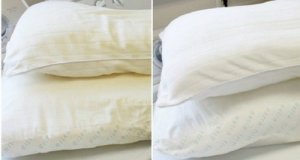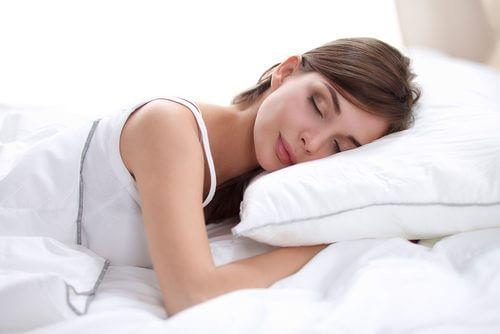Four Ways to Wash and Disinfect Pillows

Did you know that experts recommend that you wash and disinfect pillows once a month? Do you regularly do this?
To prevent your pillows from housing bacteria and dangerous microorganisms, we’ll show you simple ways to clean them.
Many people are very careful with bedding. In addition to airing it out daily, sheets and bedding requires daily cleaning and proper maintenance. That way, you prevent dust buildup,among other things.
However, most people usually just wash pillowcases. Thus, we often forget the pillows themselves. This is a big mistake. They accumulate as much or even more dirt than sheets and blankets.
When opening doors and windows, dust gets on the bedding, as well as on the pillows. You also add dust when you go to bed at night.
So, why not give them a good wash?
How to Wash and Disinfect Pillows Easily
Below, we’ll show you how to wash and disinfect pillows quickly. Then, you can do it more regularly without adding more stress to your busy days.
1. In the washing machine
You can wash most pillows in the washing machine without problems. However, you should always check the label first.
One that’s done, follow these tips:
- Use liquid soap, not powder. This way, you can be sure all of the cleaner washes out.
- Wash other light garments with the pillows. This way, your washing machine is balanced and doesn’t get ruined.
- Rinse them twice. By doing this, all of the detergent will definitely be washed out.
When you have completed this process, let them dry in the sun for a full day. This part is very important. If they’re wet on the inside, they could get moldy.
Also read: Sleeping Well: 6 Habits to Get Enough Rest
2. Quick wash

The stuffing in the pillows is not able to withstand being washed constantly. Therefore, only wash the pillow cases frequently, not the pillows themselves. Do this whenever possible.
Some let you remove the filling. You can either undo the buttons or unzip it. In fact, they’re usually stuffed with fluff or foam rubber.
The advantage to this is you can wash them quickly together with sheets. That way, you can be sure your pillows are disinfected and free of mites.
3. Vinegar and baking soda for deep cleaning
If you think your pillows need to be deeply cleaned, you can use baking soda and vinegar.
These are the steps to disinfect pillows with these ingredients:
- First, mix half a cup of baking soda with half a cup of white vinegar.
- Then, put your pillows in the washing machine.
- When they water covers them, add the mix.
- Finally, proceed with the wash as we mentioned in method 1.
In addition to washing and disinfecting pillows thoroughly, this technique will leave them gleaming. As always, the bleaching effect of these ingredients will not fail. In that sense, adding borax to the detergent instead of baking soda and vinegar will give you the same results.
You might like: The Benefits of Drinking Water with Vinegar and Baking Soda Before Meals
4. Hydrogen peroxide water for stains
Although it sounds strange, oxygenated water can also be useful for washing and disinfecting pillows. However, compared to the techniques we mentioned, it has some limitations.
Firstly, it only works for white fabrics. Given its strong whitening effect, we don’t recommend using it with dark colors.

On the other hand, you can only remove stains with this. This is because the method consists of applying a little oxygenated water on the surface you want to clean.
Despite this, it’s still a useful method. Often, pillows have stains from creams, makeup, blood, or even sweat.They buildup and leave stains. Therefore, this technique get help you get rid of them perfectly.
With these simple procedures, you can make your room even healthier and cleaner. Remember, you spend at least a fourth of your day in your bed. Therefore, washing and disinfecting pillows, as obvious as it seems, is completely necessary.
This text is provided for informational purposes only and does not replace consultation with a professional. If in doubt, consult your specialist.








